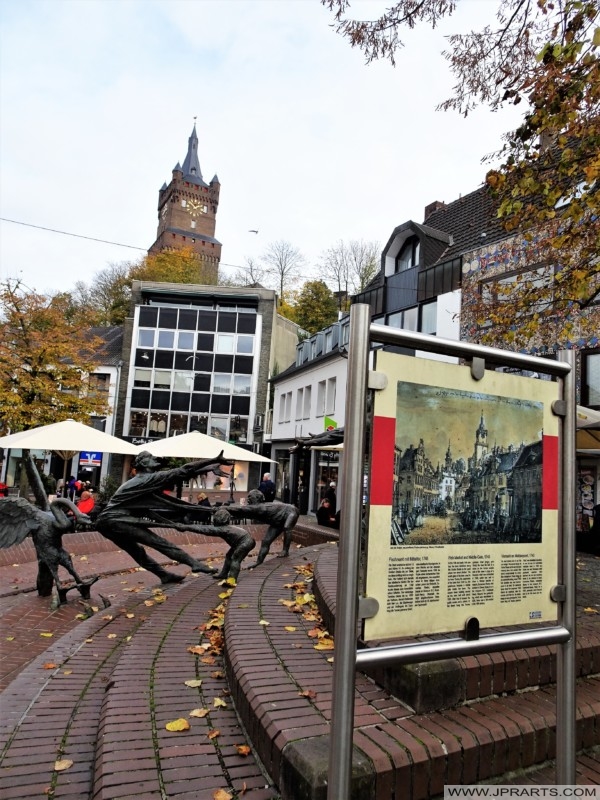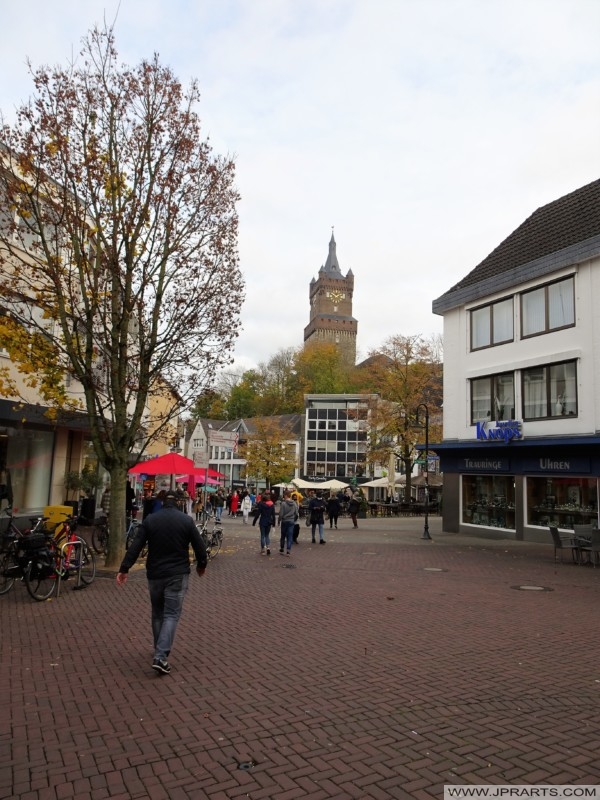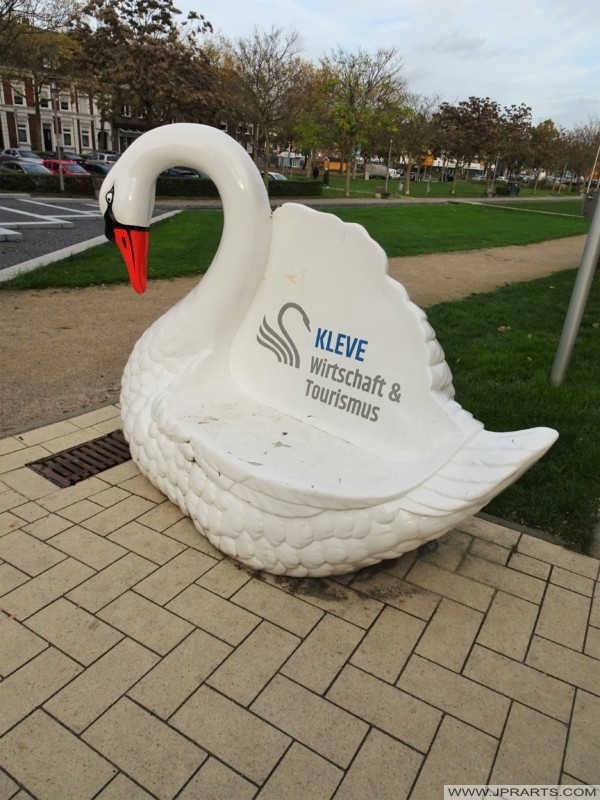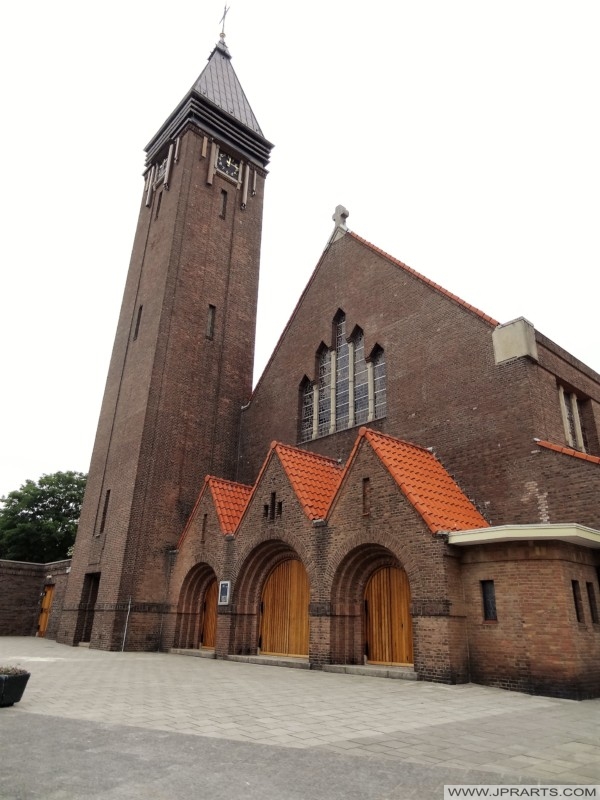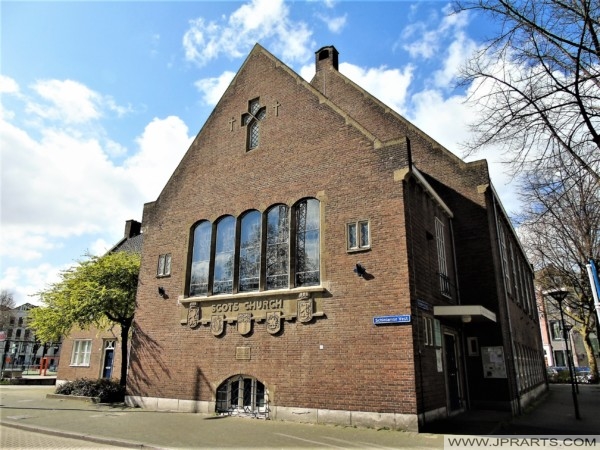As the rest of the Lower Rhine region, Kreis Kleve is a predominantly Roman Catholic. It is part of the Diocese of Münster. In Kleve city is 61.1% of the residents Roman Catholics, 14.4% Protestant, and 24.6% “Other”. The largest section of this group are residents without any religious affiliation, but there are also sizeable Russian Orthodox and Muslim communities in Kleve.
Religion in Cleves District, Germany
Religión en el Distrito de Cléveris, Alemania
The Catholic parish church of St. Peter and Paul is a listed church building in Aldekerk. The church was first mentioned in 1218 as ecclesia antiqua, at that time it received baptismal and burial rights. At the latest since 1274 it became independent with the appointment of its own pastor and the definition of the parish boundaries. It has belonged to the Diocese of Münster since 1821.
The St. The Catholic parish church of St. Vincentius, dedicated to Vincent of Valencia, is a listed church building in Asperden, a district of Goch. A church has been documented in Asperden since 1255. The successor church, built in the 15th century, was destroyed and completely demolished after the current church was built.
The Marienstift Bedburg (actually Bedbur) was a spiritual institute founded in the 12th century near Klever Castle. Before 1138, Count Arnold I of Kleve founded the Bedburg Abbey, which adopted the rules of the Premonstratensian Order, which had been founded shortly before by Norbert von Xanten. Until the beginning of the 14th century, the collegiate church served as the burial place of the Counts of Kleve. Around 1270 Bedburg became a regulated women’s monastery, and in 1519 a regulated women’s monastery. In 1604 the convent moved to Kleve, and the monastery buildings in Bedburg then fell into disrepair. In 1802 the monastery was secularized. The former monastery church has served as the parish church of St. Markus for Schneppenbaum since 1804.
Religion im Kreis Kleve, Deutschland
الدين في منطقة كليف ، ألماني
The former collegiate church in Elten is the Roman Catholic parish church of St. Vitus in Elten. Excavations in 1959 and 1964/65 revealed not only the castle buildings on the Eltenberg, but also the original castle chapel, a rectangular wooden building with a square chancel from the beginning of the 10th century, and a round building to the south. In 967, following the founding of the noble women’s monastery in Elten by Count Wichmann von Hamaland, the first collegiate church was a three-aisled tufa building that integrated the older rotunda.
The Catholic parish church of St. Aldegundis is a listed church building in Emmerich. During the Second World War, the church was destroyed in 1944 except for the enclosing walls. The nave and choir were restored to their original form by 1955. Construction of the tower began in 1959.
The Catholic parish church of St. Maria Magdalena is a three-aisled hall church in the center of Geldern. The church was built in 1339 as the monastery church of the Carmelite monastery in Geldern, founded in 1306. Written records indicate a possible predecessor building from the 13th century. The sources mention an “ecclesia Gelrensis infra oppidum” shortly after 1290. Since the church in Nieukerk is still mentioned as “ecclesia in Gelre” in 1067 and as “ecclesiae in Gelren” in 1249, it is assumed that St. Dionysius Nieukerk only ceded Geldern to the parish in the 13th century. In 1306, Count Rainald I of Geldern left the court chapel to the newly founded Carmelite monastery as a monastery church, although this building could not be located exactly and does not necessarily have to be identical to the current location of St. Maria Magdalena.
الأشجار
德国克莱夫区的宗教
The year 1570 is considered to be the founding year of the reformed church in Goch. Even before that (from 1543) Calvinists from the Netherlands, the Geusen, had fled to the Duchy of Kleve. Various decrees (1565 and 1567) by the Duke of Kleve could do nothing to stop this movement. In Goch they met a Protestant minority of Lutherans. The Protestants worked as an underground community (“Church under the Cross”), since under pressure from Emperor Maximilian II after 1567 the Counter-Reformation also had to be enforced in the Duchy of Kleve. They therefore met secretly in residential buildings. The first protocols of the community leadership that have survived to this day date from 1570. The Dutch refugee community had already given itself an order for this. Thus the ministry of the deacons, the tasks of the consistory and the duties of the parishioners were regulated. A copy of these Dutch-language “ordinances” can be found in the archives of the Evangelical parish. In 1577 the native Lutheran congregation and the Dutch refugee congregation merged. The evangelical church on the market in Goch has been the place of worship for the evangelical community in Goch on the Lower Rhine since the early 18th century.
The Catholic Church of St. Nicolai in Kalkar is known, among other things, for its nine (originally at least 16) carved altarpieces, its church windows, its choir stalls, the historic Seifert organ and its Marian chandelier. The church is a three-aisled hall with two parallel choirs and a built-in west tower. The construction was probably started as early as 1230.
Religion dans le District de Clèves, Allemagne
Almanya, Kleve Bölgesi’nde Din
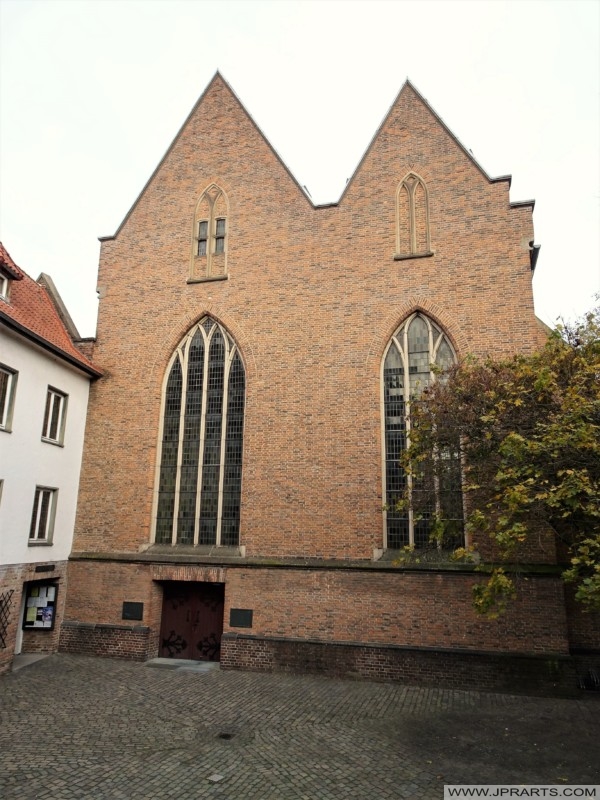
The Marienbasilika is a Marian pilgrimage church in Kevelaer, in which the major services of the Kevelaer pilgrimage are celebrated. The neo-Gothic church was built by Hilger Hertel the Elder from 1858 to 1864 according to plans by Vincenz Statz. The four-storey, 90 m high west tower was not built until 1883/84.
The Catholic branch church of St. Vincentius is a listed church building in Mehr, a district of Rees. It is a branch church of the St. Irmgardis congregation in Rees. The community belongs to the deanery of Emmerich in the diocese of Münster.
The so-called collegiate church is a provost church and the Roman Catholic parish church of Kleve under the patron saint of St. Mary’s Assumption. In 1170 a church near Kleve Castle is mentioned. When the city of Kleve was founded in 1242, this church initially remained outside the city fortifications. A branch church was built within the city walls, where a Minorite convent settled. From 1341 to 1802 the parish of Kleve was incorporated into the sovereign Marienstift. In 1924, the Klever Unterstadtkirche St. Mariae Konception was separated into an independent parish, and in 1950 the new parish of Christ the King was established. In 1967, the parish of St. Mariae Himmelfahrt was raised to a provost and the collegiate church to a provost church at the same time. Since then, the respective pastor has held the title of provost. When the Klever city parishes of St. Mariae Assumption, St. Mary’s Conception, Christ the King, Sacred Heart of Jesus and the parish of St. Lambertus Donsbrüggen were merged in 2005, the collegiate church became the parish church of the new parish of St. Mariae Himmelfahrt.
Религия в районе Клеве, Германия
Religie in Kleef District, Duitsland
Visit Cheap Shopping to Order Blu-rays, Books and DVDs Cheap Online
Visit Germany Travel to Book Flights and Hotels Cheap Online

